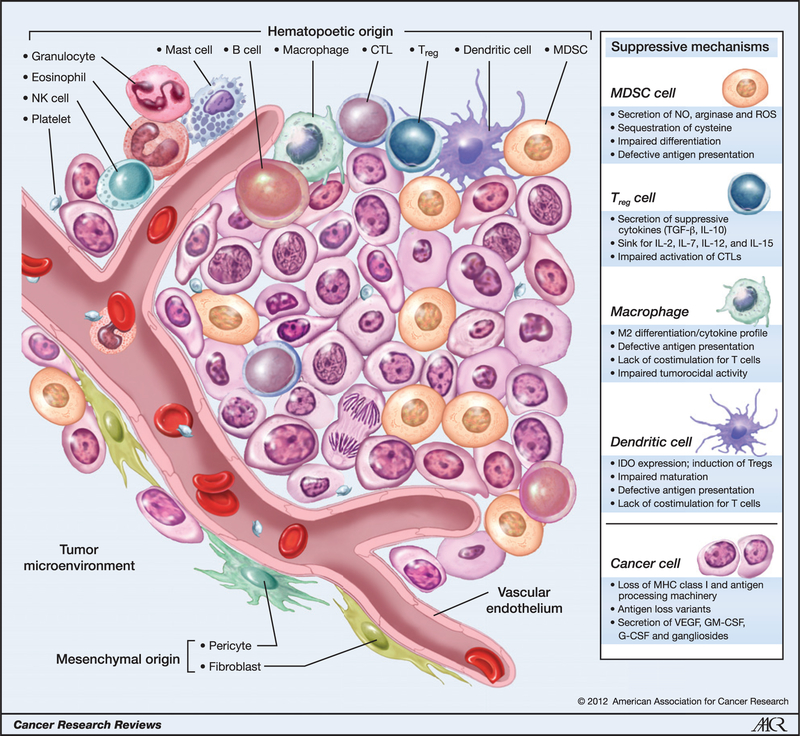Figure 1.
Cellular infiltrates within the tumor microenvironment. Established cancers consist of a wide array of immune cells that contribute to the tumor stroma of a growing malignancy. Tumors possess infiltrating cells of both innate and acquired immunity, such as MDSCs, macrophages, DCs, mast cells, eosinophils, neutrophils, NK cells, and lymphocytes. These cells coordinately form a complex regulatory network that fosters tumor growth by creating an environment that enables cancers to evade immune surveillance and destruction. G-CSF, granulocyte colony-stimulating factor; GM-CSF, granulocyte-macrophage colony-stimulating factor; NO, nitric oxide; ROS, reactive oxygen species.

